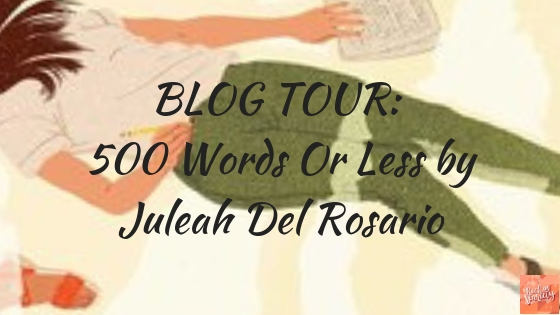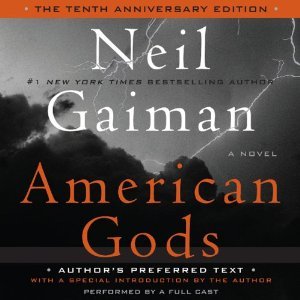I’ve been reading a lot more novels in verse this year, the latest of which is Swing by Kwame Alexander with Mary Rand Hess. I first learned of this writing duo through their previous book, Solo, and was pleased when I got the chance to joined the #SwingLaunchTeam. It’s been a real treat getting to learn about the book, hearing what other members of the #swingbook launch team have thought about it, and now getting to share my personal reading experience with all of you.

Amazon | Barnes & Noble | Book Depository | Goodreads | Indiebound
Published: 2 October 2018
Publisher: Blink
Category: Young Adult/Poetry/Realistic Fiction
Things usually do not go as planned for seventeen-year-old Noah. He and his best friend Walt (aka Swing) have been cut from the high school baseball team for the third year in a row, and it looks like Noah’s love interest since fifth grade, Sam, will never take it past the “best friend” zone. Noah would love to retire his bat and accept the status quo, but Walt has got big plans for them both, which include making the best baseball comeback ever, getting the girl, and finally finding cool.
To go from lovelorn to ladies’ men, Walt introduces Noah to a relationship guru—his Dairy Queen-employed cousin, Floyd—and the always informative Woohoo Woman Podcast. Noah is reluctant, but decides fate may be intervening when he discovers more than just his mom’s birthday gift at the Thrift Shop. Inside the vintage Keepall is a gold mine of love letters from the 1950s. Walt is sure these letters and the podcasts are just what Noah needs to communicate his true feelings to Sam. To Noah, the letters are more: an initiation to the curious rhythms of love and jazz, as well as a way for him and Walt to embrace their own kind of cool. While Walt is hitting balls out of the park and catching the eye of the baseball coach, Noah composes anonymous love letters to Sam in an attempt to write his way into her heart. But as things are looking up, way up, for Noah and Walt, the letters set off a chain of events that change everything Noah knows to be true about love, friendship, sacrifice, and fate.
In Swing, bestselling authors Kwame Alexander and Mary Rand Hess (Solo) present a free-verse poetic story that will speak to anyone who’s struggled to find their voice, and take a swing at life.
Rating: 4 Stars
CW: (highlight to reveal content warnings) PTSD (scenes with a character exhibiting symptoms thereof)
The friendship trio showcased in Swing is classic. Noah, Walt, and Sam’s friendship was so strong in middle school, then came to face the challenges of high school and the changes that test the ties that bound them together. New things rise up and make you question what’s important now, who is going to remain in your life, whether the old is going to stand the test of time or if it’s going to give way for something different. It can be sad but it can also be normal. Noah observing all this in verse, telling us what’s happening to his friends, brings up memories of the past for readers while we’re living in his present, waiting to see what it turns into.
I WILL make the varsity baseball team senior year. Bet on that. I’ll practice harder than before. Work out harder. Get ripped. Give the whole of my heart and soul to the glove and the ball.
Walt, a.k.a. Swing, was such an enthusiastic character. He was always talking to Noah, the main voice of the novel, the “I”, about his philosophy of life called cool. Walt’s dreams extend beyond cool, though. He loves a lot more and his passion show through in how he lives every day to the fullest, how he espouses what he calls Hug Life. Baseball, for example: it’s about so much more than loving the game, the players. It’s the intricacies, being in the moment, feeling it inside. He doesn’t see not being on the team right now as a letdown. Baseball doesn’t ever let him down. It’s his future, one way or the other.
Abandoning the traditional major and minor key relationships of tonality, Miles based the entire album on modality. It was a remarkable, landmark album that shaped the future of modern music. It was improvisation, but each of the performers was given a set of scales that defined the parameters of their improvisation.
There was a lot about music and the depths of emotion that it could stir, particularly when a character named Divya appears as a love interest for Walt/Swing. Noah makes this real soulful connection to music that feels beautiful, almost like a camera panning an especially well lit scene in a film with the perfect soundtrack.
The scene, the beginning of something for Divya and Walt as quoted above, was one of my favorite scenes. It’s easy to picture them in this crowded thrift shop where Divya worked, Noah in the background observing their story just starting, and different records being played.
Noah has his own love story to work on throughout the book: whether to act on a crush, whether to confess, whether to EMBRACE LIFE in the words of his best friend. It’s a confusing time and it’s something that could be relatable, even if it’s not specifically about a crush. Noah’s nerves were for sure something that could be applied to a few different situations, especially for readers that are his peers.
Looks pretty safe to me. This is a nice neighborhood. Yeah, pretty safe for YOU, but I’m a black kid walking up and down the street with a baseball glove. At three am. In the middle of nowhere. You do that math, Noah.
Among the changes of teenage friendships and trying to figure out a crush, there’s also an interaction between Walt & Noah when Walt calls Noah for a ride home. It’s summed up in this quote and shows how different their world views are, how some things don’t even register to Noah while Walt has them in at the forefront every moment.
It wasn’t always easy to understand who was talking while reading this book because in verse as opposed to narrative, there were no tags, no names coming out at the end of the sentences. The voices really have to stand out on their own so the reader can identify the different characters. Sometimes Walt/Swing and Noah blended a little too much and made the text confusing.
Swing had a lot of imagery that went from words and translated to visual and auditory imaginings, something I appreciated because it made the book even more of an experience. Kwame Alexander with Mary Rand Hess have created another book that in verse is something that can be consumed either with speed, easily, but also slowly, to be savored while picking up all the nuances with each verse.
I received a copy of this book from the author in exchange for an honest review.
All media (pictures, quotes, etc.) belong to the respective owners and are used here solely for the purpose of review and commentary.



![ZERO REPEAT FOREVER WEBSITE REVEAL[1321]](https://thehermitlibrarian.files.wordpress.com/2018/09/zero-repeat-forever-website-reveal1321.jpg?w=656)

![headshotgpnov16-color[1323]](https://thehermitlibrarian.files.wordpress.com/2018/09/headshotgpnov16-color1323.jpg?w=656)















